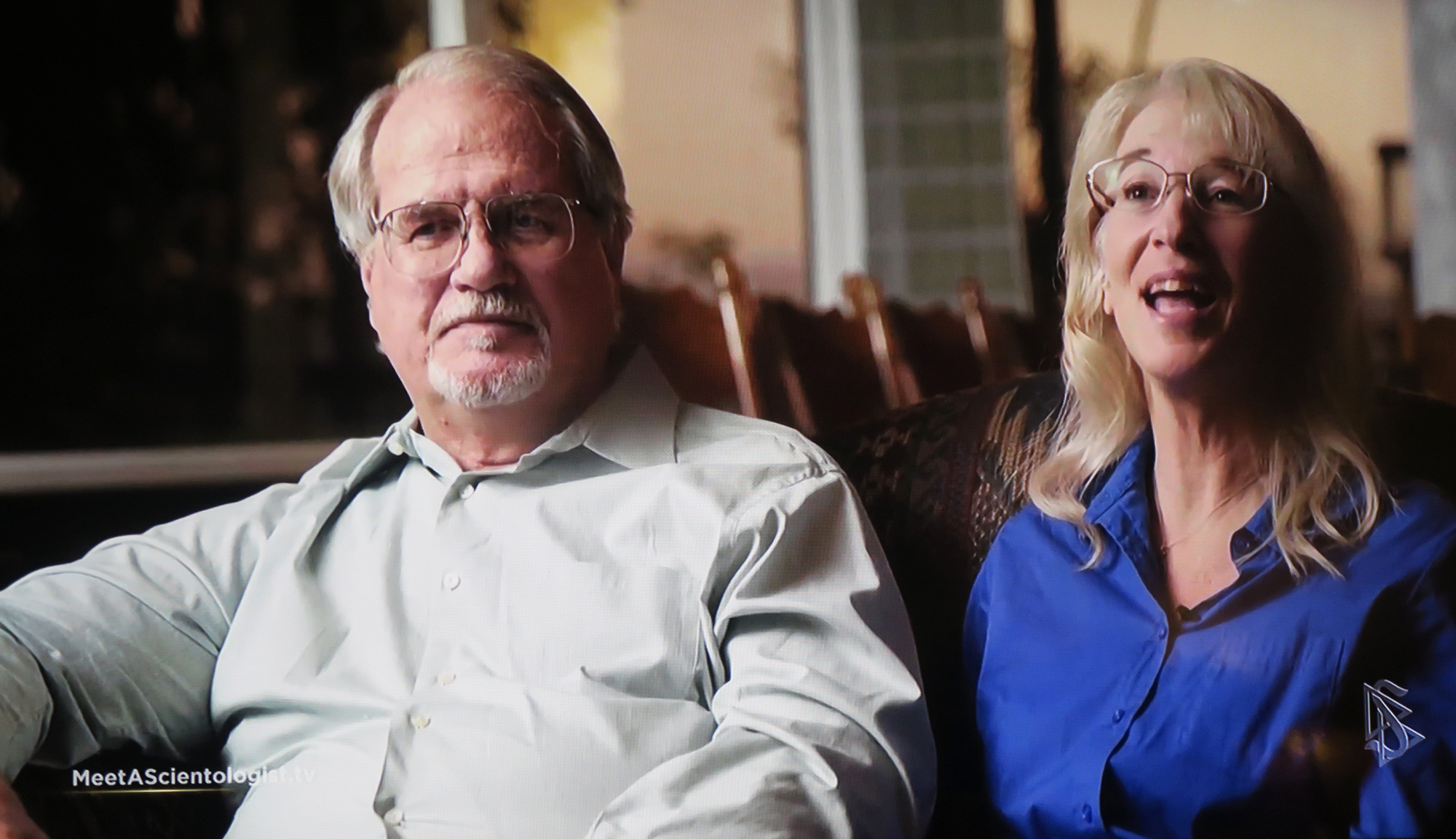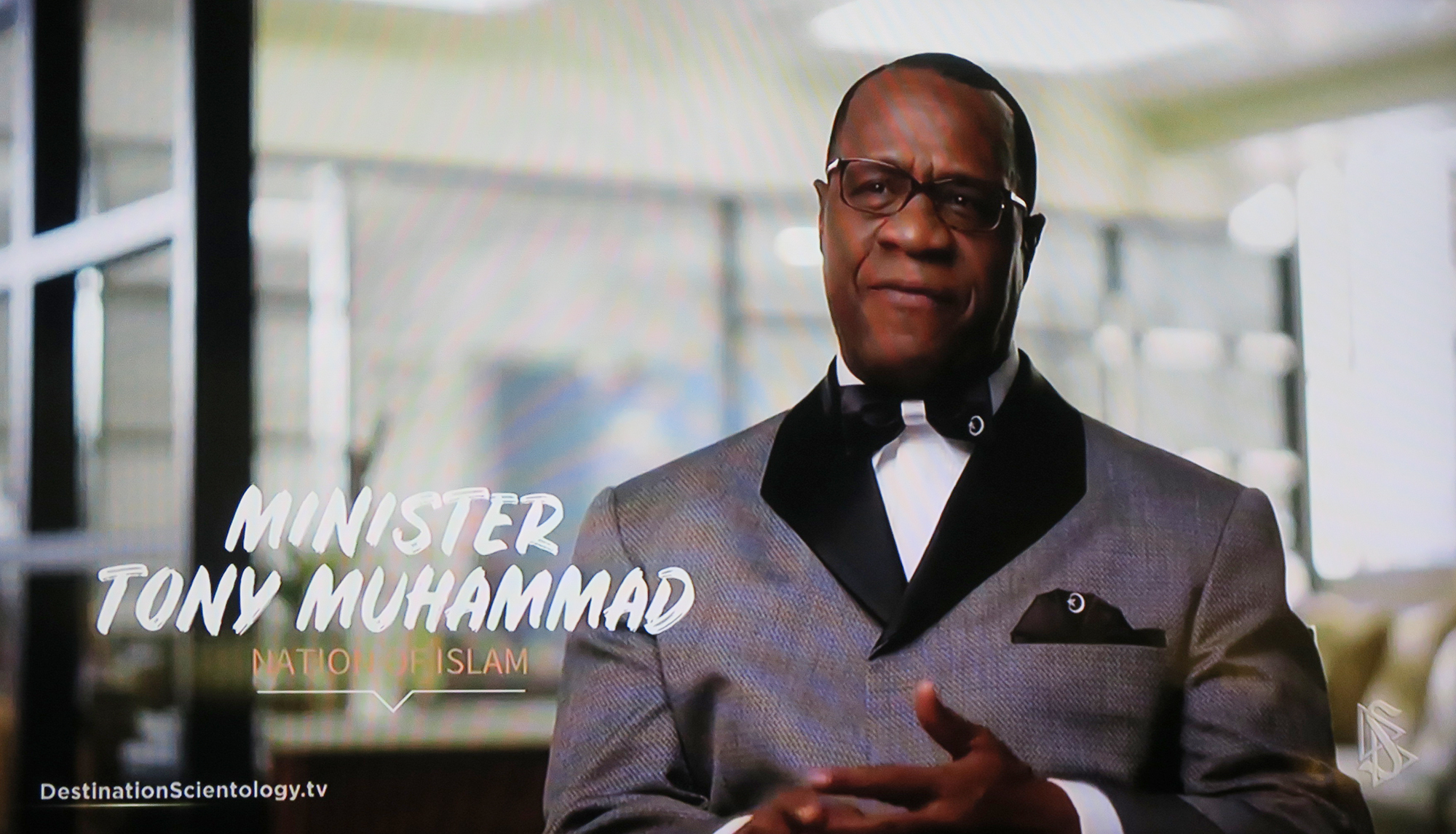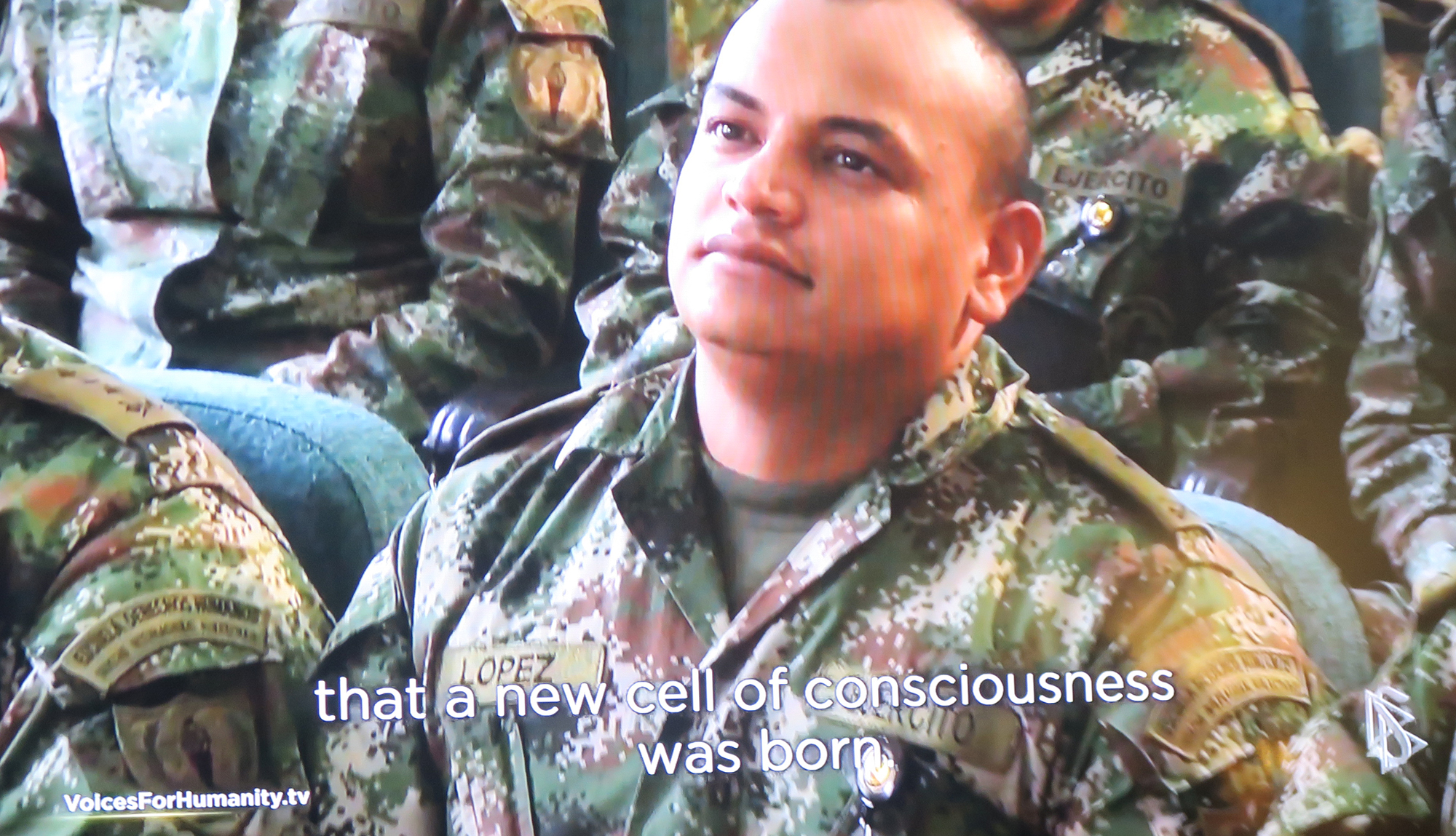“We get it, people are curious,” says Scientology leader David Miscavige in the intro video to his new TV channel. “Whatever you’ve heard, if you haven’t heard it from us, I can assure you we’re not what you expect.”
And Miscavige is right. From Going Clear to South Park to that Leah Remini show, almost everything you hear about Scientology is coming from either an outside critic or a former member, rarely someone on the inside. And a lot of what you hear about Scientology is mockery, or criticism for the many, many fucked up things the church has done. (Like forcing people to disconnect from their families. Or allegedly abusing their members. Or using 9/11 and Columbine as tools to push their agenda. Or harassing former members and journalists. Or perpetrating a giant campaign of domestic espionage against the US.)
Videos by VICE
I’ve probably been exposed to more of Scientology’s words than the average person, because I’ve written about them in the past and read their books and visited their buildings. I also get a bunch of their literature in the mail because the person who lived in my house before me was a Scientologist. But the vast majority of things I’ve seen about Scientology have come from non-Scientologists.

So I figured fuck it, why not give them a chance to say what they want to say? I decided to watch 24 straight hours of the Scientology Network on its first full day of broadcast on Tuesday to see what it’s all about.
Inside Scientology

When I tuned in at 5:15 AM, a show called Inside Scientology was playing.
I was way, way too tired to wrap my head around it. I’m not entirely sure who the show is meant to be for. Miscavige, in his introduction, suggested that non-Scientologists are the target audience for the channel. But Inside Scientology was so jargon-heavy (“We are here to make the able more able“) that it’s hard to imagine it appealing to anyone who isn’t a Scientologist.
I just kinda zoned out on the audio and admired the shots of the aggressively multicultural, smily, well-groomed Scientologists they had in every shot.
Luckily for me, Scientology Network loves to replay stuff. I saw this particular episode (and almost every episode mentioned in this piece) multiple times throughout the day. After the second or third go-round, I was able to fully take it in. It was basically just explaining what Scientology could do for you. Stuff like get you a better job and make you look “five to ten years younger.”
It never got any easier to wrap my head around lines like “Scientology is a technology, the way that building a bridge is a technology,” though.

Also, the show’s titles looked exactly the same as those on MTV Cribs.
Meet a Scientologist

Next up was Meet a Scientologist, a show in which the viewer gets to meet a Scientologist.
The episode I saw four or five times introduced me to Greg and Janet Deering, a Scientologist couple who own a banjo business. It’s easy to see why these guys were included. They seem to be legitimately successful in their field, and because they’ve worked with artists like the Dixie Chicks, Mumford & Sons, and Taylor Swift, it’s a way for the church to get some impressive names on their network.
But god damn are banjos boring. There’s probably an interesting eight-minute video that could be made about these people. But this show was around 30 minutes long, including commercials. Was it interesting to hear about how there was a point in time where banjos almost died out and these guys helped to repopularize them? Definitely! Was it interesting to hear that Janet once went on a road trip with Greg’s mother, or that Janet’s dad worked as a wind tunnel operator, or that Greg once designed a banjo inspired by Woody Harrelson’s character in Zombieland? Absolutely not.
Principles of Scientology

Again, I’m not totally sure who this one is aimed at.
The idea, as per the title, is to convey the principles of Scientology. It started off simply enough, with a voiceover explaining that if you have your appendix removed, it doesn’t change your personality, because you’re not your body.
Pretty standard spiritual stuff. Fine.
But then they threw it into the highest gear, deployed the nitrous oxide, pulled a donut, and tore the wrong way down the freeway. “You are not your body” became “the eighth dynamic is the urge towards existence as infinity” which became an explanation of how affinity, reality, and communication form the basic components of understanding.
Destination: Scientology

Each episode in this series focuses on a different Scientology church location. The episode I saw many, many times took a look at the church and community center in Inglewood, Los Angeles.
In the episode, church members, local religious leaders, and a representative for the Nation of Islam (!!!) talked about the neighborhood’s problems with drugs, gang violence, and unemployment.
Scientology reps explained that they’d chosen that specific location for their community center because it’s just a few blocks from where the LA riots started, and they wanted to help the community heal. (The LA riots were in 1992, the Inglewood Scientology centers opened in 2011.)
But then the claims got grander and vaguer, in a sequence I didn’t really understand. First a Scientologist talked about Bloods and Crips in Inglewood. Then they showed some kind of Scientology community outreach program that had something to do with telling kids gangs are bad. Then there was an explanation of Mike Brown and the Ferguson protests, with shots of rioting, and a lady saying “It could have gone national.” Then the Nation of Islam guy explained that there’d been some kind of gang summit at the Scientology center, which led to lots of LA’s gangs agreeing that killing each other is bad. Then the same guy explained that because LA is a trendsetting city, gangs in other cities started calling him, asking for him to do similar events in their cities. I’m fairly sure the implication was that Scientology is the reason that the rioting that happened in Ferguson didn’t spread nationwide? But I’m also just confused.
Voices for Humanity

This was essentially the same show as Destination: Scientology, only instead of hinting at the massive influence of Scientology in South LA, it hinted at the massive influence of Scientology in Colombia.
Specifically, the show made the case that, as the result of Scientologists giving talks and handing out literature on the importance of human rights, crime dropped and complaints against the military—who had previously been murdering civilians—fell 96 percent.
They seemed to be saying that the people of Colombia were unable to figure out that murdering or beating or robbing someone was bad until Scientologists gave them a pamphlet telling them that human rights are actually good. Which… is probably a bit offensive.
Commercials
The shows had commercial breaks, but they only showed commercials for Scientology, Scientology-related organizations, and Scientology TV shows. As the shows themselves are basically commercials for Scientology, it meant that, at times, I was in a commercial break, from a commercial, watching a commercial for an upcoming commercial.
Most of the commercials would be really fast cuts of like, sped-up footage of people on escalators/slow motion shots of a bird in flight/a word like “communication”/drone footage of Hollywood/an eagle in flight/a matador / a guy sitting in a dry lake bed at sunset/a title card with the Scientology logo and a lens flare.
They were extremely slick and well produced, like those universe-establishing commercials they have for evil corporations in sci-fi movies. On a couple of occasions, they got me kinda amped up. I could definitely see myself eating an Okja or signing up for a Hunger Game or whatever if they caught me in the right mood.
L. Ron Hubbard: In His Own Voice and L. Ron Hubbard Library Presents

I’m lumping these two together because they were essentially the same show. One looked at the life of L. Ron Hubbard, the other at his writings and speeches.
It seemed like a pretty bold concept, given that L. Ron Hubbard and his church are extremely famous for acting in ways that are in direct opposition to the sentiments being pushed in the shows.
There was a section about Hubbard being appalled that universities and religious institutions don’t give out their information freely. “I have never seen wisdom do any good kept to oneself,” said Hubbard. Which is an odd position to take when you’re famous for founding an organization that allegedly forces its adherents to pay thousands and thousands of dollars in exchange for information.
Elsewhere, someone delivered the message that one of the basic creeds of Scientology is “that all men have inalienable rights to think freely, to talk freely, to write freely their own opinions, and to counter or utter or write upon the opinions of others.” Which is probably one I would be a bit embarrassed to stand behind if I were part of an organization that once attempted to frame a journalist in a bomb plot because she wrote critically about them.
By 6 PM I was getting anxious and panicky. I hadn’t seen any new content in hours. At one point, while making coffee, I heard the voice of the banjo makers and involuntarily yelled “NO!” (It turned out to just be a commercial.)
But then a miracle happened. New programming appeared!
I Am a Scientologist

This was by far the worst show on the channel, and the one with the simplest premise: Scientologists from around the world explained how Scientology has helped them in their lives.
Each clip was almost identical, with a Scientologist introducing themselves, saying something to the effect of “Scientology helped me in my career because it made me a better communicator,” then introducing themselves again. Each one lasted about a minute. Each one was agonizingly boring.
I noticed in one of the shots that there was a theater marquee advertising The Other Boleyn Girl, which came out in 2008. Which suggests this footage was shot for something else and re-edited into this nonsense.
Common Sense for Life

This one featured a series of super short (and super dramatic!) films based on a booklet L. Ron Hubbard wrote called The Way to Happiness—which is kinda like Scientology’s version of the Ten Commandments.
This also seemed to have been filmed some time ago. I’m not sure when, exactly, but everything had the same tone and styling as the “Pretty Fly For a White Guy” video.

Eventually, despite the new programming, I started to get sleepy. I spent the final hours of my experiment drifting in and out of sleep on my couch.
I woke up to see a skateboarder rubbing his injured leg against a rail while a voiceover talked about the importance of confronting pain. I woke up to a scene of a woman having an acid flashback during a board meeting. I woke up to people acting out the definition of the word communication” I woke up to a woman saying, “He said he’d love me forever if I smoked crack with him—he lied.”
There are things I remember and I’m unsure if they actually happened, or if I dreamed them. There’s a line in my notes that I don’t remember writing that says: “shot of a fat person accidentally burning down a business.”
When I got into bed at the end of my 24 hours, I had my first nightmare in a long time. An apocalyptic black cloud had enveloped my neighborhood, trapping me inside my house. Then I discovered a man had broken in and started putting up advertising posters in my living room. I noticed a cop outside, and called for help. But when he came inside my house, he started sticking up posters too.
I’m not sure if Scientology inspired it, but it felt poignant.
Sign up for our newsletter to get the best of VICE delivered to your inbox daily.
Follow Jamie Lee Curtis Taete on Instagram.




